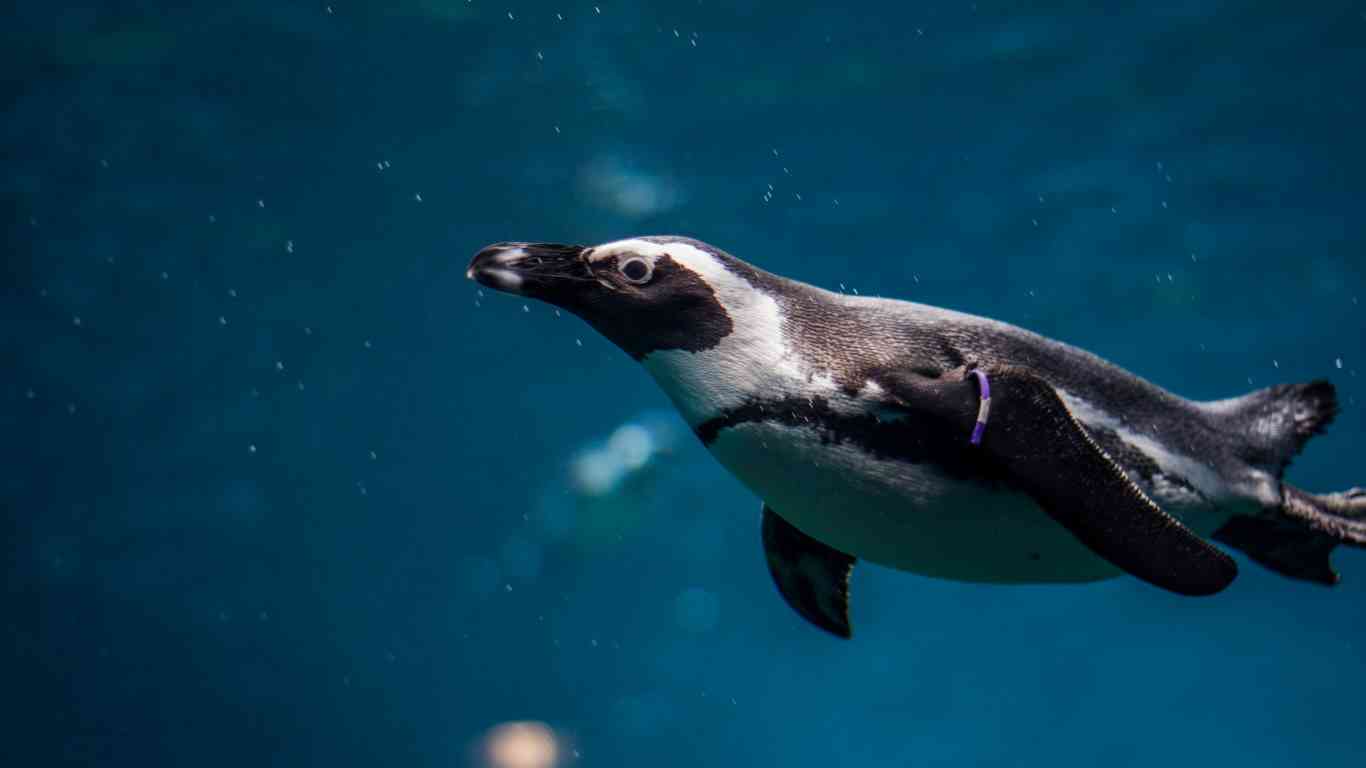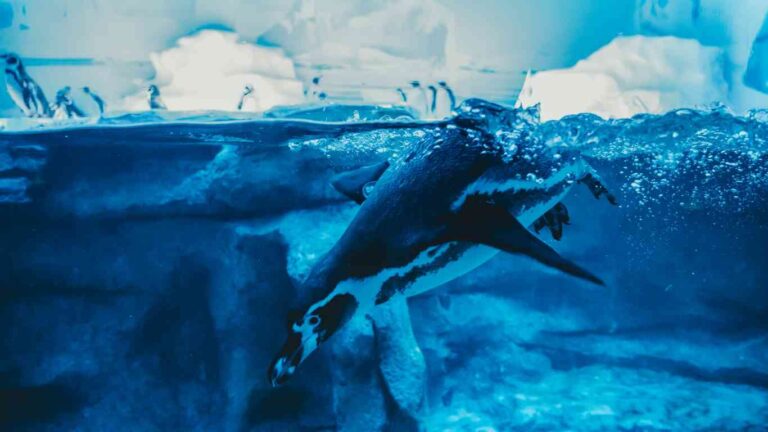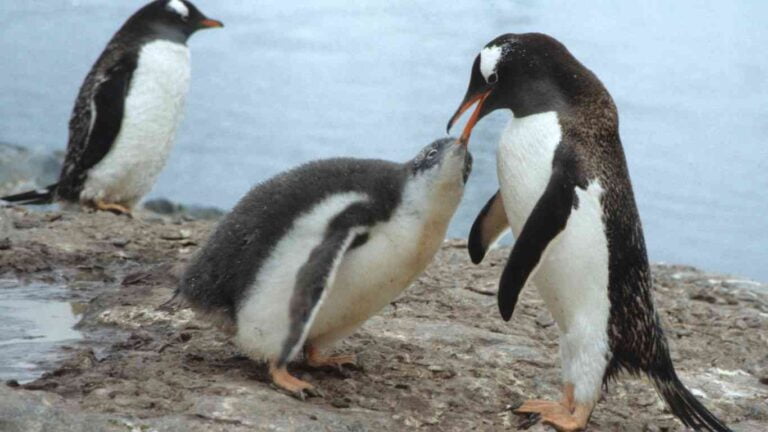How Deep Can Penguins Dive? (Facts about Their Diving Abilities)
Penguins are known for their remarkable ability to dive deep into the ocean in search of food. These dives vary significantly among the different species, with some reaching astounding depths.
Recent studies have shed light on just how deep these birds can plunge in search for food, revealing astonishing hidden abilities below the surface.
How Deep Can Penguins Dive?
Penguins typically can dive between 20 and 500 meters, depending on the species. Emperor Penguins (Aptenodytes forsteri), the tallest and heaviest of all penguin species, hold the record for the deepest divers.
Emperor Penguin birds have been recorded diving to depths of over 500 meters (1,640 feet) – a figure that often surpasses that of their aquatic mammalian counterparts like seals.
On average, an Emperor Penguin’s dive lasts between 3 to 6 minutes, although they can stay underwater for approximately 22 minutes if needed.
Scientists use satellite tracking and time-depth recorders to gather data on the diving habits of penguins.
Dr. Gerald Kooyman revolutionized the study of diving in penguins in the 1970s with the invention of the time-depth recorder.
These devices are attached to the birds, recording the depth, duration, and frequency of their dives over extended periods.
Through this technology, researchers have accumulated compelling evidence of penguins’ abilities.
How Can Penguins Dive So Deep?
The penguins’ unique physiology, including their solid bones and special hemoglobin, allows them to withstand the pressures of deep dives and to store more oxygen to last during these extensive underwater excursions.
Penguins are amazingly well adapted to their aquatic life. Several physiological adaptations aid these birds in their deep-diving endeavors:
Efficient oxygen use: Penguins have a unique blood oxygen-binding protein that allows them to store more oxygen in their muscles, effectively supporting longer dives.
Solid bones: Unlike other birds with hollow bones for flight, penguins have solid bones that reduce buoyancy and allow them to slice through the water with less upward resistance. This unique adaptation is critical for diving deep.
Muscle and fat reserves: Adept at conserving energy, penguins have muscle and fat reserves that sustain them through both long swims and the fasting periods of breeding season.
Why Do Penguins Dive So Deep?
By diving astounding depths, they access abundant food sources that aren’t available to surface dwellers.
Their diving prowess also ensures that they can gather enough food to feed their chicks during breeding season, thus enabling their species to thrive even in exceedingly harsh environments.
Diving is not just a casual activity for penguins; it is a necessary skill tied to their survival. The deep sea is where these birds find most of their prey, which includes fish, squid, and krill.
Deep Diving Skills for Different Penguin Species
Penguins are known for their impressive diving abilities, with each species having specific adaptations for underwater proficiency. Let’s explore the diving capabilities of various penguin species.
King Penguins
King Penguins are impressive divers, commonly diving to 300 meters for about nine minutes. Occasionally, they have been recorded diving even deeper in pursuit of prey like lantern fish and other deep-sea creatures.
Although not as large as Emperor Penguins, they are the second deepest divers among penguins.
Humboldt Penguins
Humboldt Penguins may not reach the depths of Emperor or King Penguins, but they have a respectable diving profile.
Humboldt Penguins usually dive to depths of around 30 to 60 meters but can reach depths of 150 meters.
The relatively shallow dives correspond with their feeding habitats, as they prey mainly on fish and squid that are found in the rich coastal waters of the Humboldt Current.
African Penguins
African Penguins, generally dive to depths between 20 to 60 meters and stay submerged for about 2.5 minutes.
These penguins forage in the open sea, where they feed primarily on small fish such as sardines and anchovies.
Gentoo Penguins
Gentoo Penguins are capable of diving to depths over 200 meters, usually ranging from 100 to 200 meters, and their dives can last up to seven minutes.
Known as the fastest-swimming penguins, they can reach speeds of up to 36 kilometers per hour.
Macaroni Penguins
Macaroni Penguins are frequent divers, with typical depths ranging between 15 to 70 meters.
However, they have been recorded to dive as deep as 100 meters searching for krill and other crustaceans. They are known for their distinctive yellow plumes and their diving prowess.
Little Blue Penguins
Also known as Fairy Penguins, the Little Blue Penguins have been recorded making dives of up to 72 meters deep.
However, most of their dives are within 20 meters of the surface, as they generally pursue prey within this range including small fish and squid.
Chinstrap Penguins
While foraging, chinstrap penguins tend to dive to depths of 30–60 metres, but can go as deep as 90 metres if necessary.
Named after the thin black band under their heads, Chinstrap penguins often plunge to such depths in search of krill, which constitutes the major part of their diet.
Final Thoughts
Each penguin species has developed unique adaptations to maximize its chances of survival in its specific habitat, with diving capabilities that cater to their needs, prey availability, and the conditions of the ocean they call home.
Whether diving more than half a kilometer deep or zipping through the shallows, penguins are masterful divers, perfectly evolved to thrive in their respective marine environments.
(Featured image by Atlas Kadrów on Unsplash







